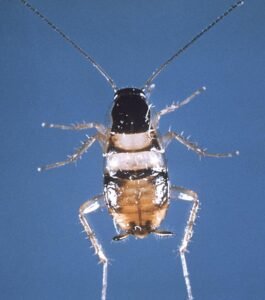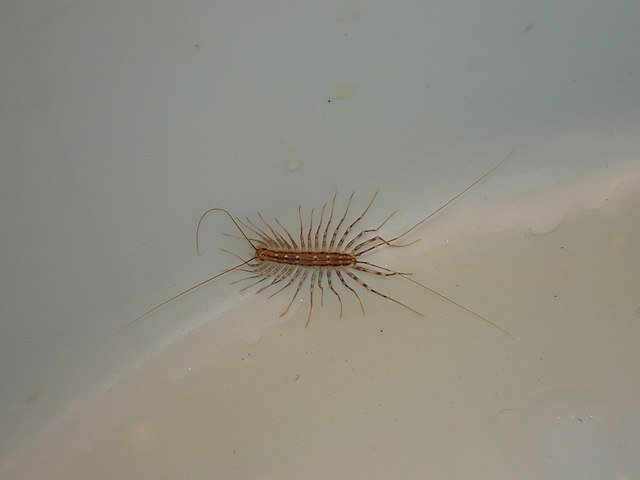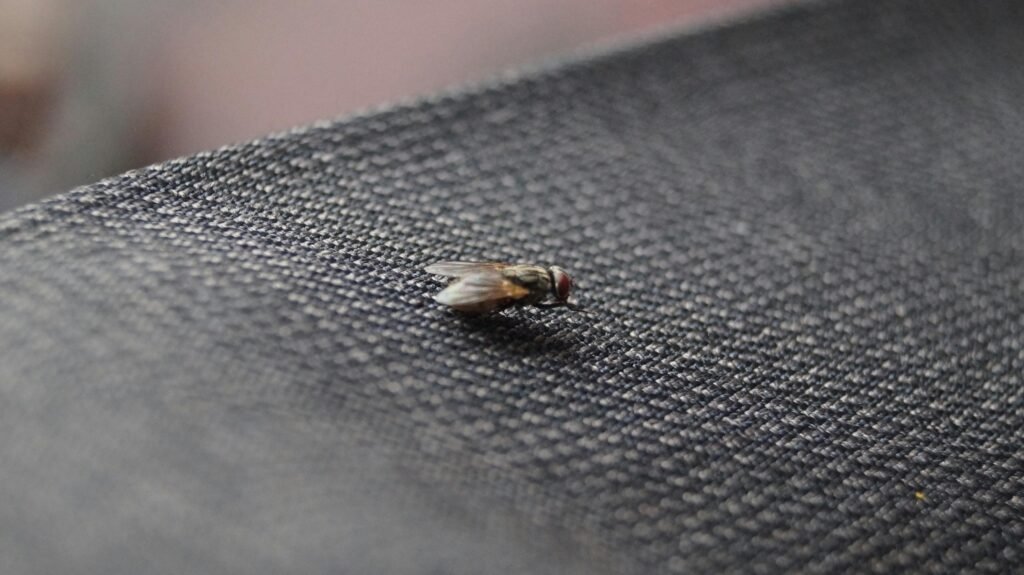Brown-Banded Cockroach (Supella longipalpa) – Complete Guide
 The brown-banded cockroach (Supella longipalpa) is one of the smaller and less familiar roach species that infests homes and buildings worldwide. While the German cockroach (Blattella germanica) usually gets more attention, the brown-banded roach is equally troublesome and often harder to detect due to its unusual habits.
The brown-banded cockroach (Supella longipalpa) is one of the smaller and less familiar roach species that infests homes and buildings worldwide. While the German cockroach (Blattella germanica) usually gets more attention, the brown-banded roach is equally troublesome and often harder to detect due to its unusual habits.
Unlike other cockroaches that prefer damp environments like kitchens and bathrooms, brown-banded cockroaches can survive in drier areas such as bedrooms, living rooms, and offices. Their adaptability and secretive behavior make infestations difficult to identify until the population is well established.
This article provides a detailed overview of Supella longipalpa, covering its biology, ecology, distribution, risks, signs of infestation, and modern strategies for control.
Identification
Size: Adults measure around 10–14 mm, smaller than most household cockroaches.
Color: Light brown to tan with two distinctive lighter-colored bands running across their wings and abdomen.
Wings: Males have longer wings covering the abdomen completely, while females have shorter wings.
Behavioral Traits: Unlike American cockroaches (Periplaneta americana), brown-banded cockroaches prefer warm, dry, and elevated locations such as high cabinets, picture frames, and furniture.
A key difference is that these roaches often avoid kitchens entirely, preferring hidden places away from water sources. This makes them less predictable than other cockroach species.
Biology and Ecology
The brown-banded cockroach’s life cycle and habits allow it to thrive in diverse indoor environments.
Life Cycle:
Females produce oothecae (egg cases) containing 14–18 eggs.
Eggs hatch in 50–75 days, depending on temperature.
Nymphs undergo 6–8 molts before reaching adulthood.
Adults live for 5–10 months under favorable conditions.
Feeding Habits:
Brown-banded cockroaches are opportunistic feeders. They consume:Food crumbs and grease.
Book bindings, paper, glue, and fabrics.
Organic residues, including pet food.
Behavioral Ecology:
They hide in cracks and crevices high above the ground.
They are nocturnal but may sometimes be active during the day in severe infestations.
They prefer warm environments (above 80°F / 27°C).
Global Distribution
Supella longipalpa originated in Africa but has now spread worldwide.
North America: Common in southern and central states but found indoors throughout the continent.
Europe: Established in warmer urban regions and inside heated buildings.
Asia: Present across India, China, and Southeast Asia.
Africa and Latin America: Widespread in residential and commercial buildings.
Their adaptability to heated, dry conditions allows them to survive in climates where other roaches struggle.
Risks and Damage
The presence of brown-banded cockroaches carries multiple risks for humans:
Allergies and Asthma: Their shed skins, saliva, and feces trigger allergic reactions.
Food Contamination: They spread bacteria like Salmonella and E. coli.
Damage to Materials: Infestations may damage books, fabrics, wallpaper, and stored goods.
Psychological Stress: As with bed bugs (Cimex lectularius), the presence of roaches often causes anxiety, insomnia, and reduced quality of life.
Signs of Infestation
Visible Roaches: Adults or nymphs spotted in upper cabinets, behind wall decorations, or electrical appliances.
Egg Cases: Small, brown oothecae glued to furniture, ceilings, or walls.
Droppings: Tiny black specks resembling pepper in hidden areas.
Odor: Strong musty smell in severe infestations.
Unlike other cockroach species, finding them in bedrooms or offices is a clear red flag.
Control Methods
1. Sanitation
Vacuum cracks, corners, and furniture.
Store food in sealed containers.
Remove clutter that provides hiding spots.
2. Exclusion
Seal cracks with caulk.
Repair screens and weather stripping.
Eliminate cardboard storage (they eat the glue).
3. Chemical Control
Gel Baits: Effective against scattered infestations. Place in upper cabinets and behind furniture.
Insect Growth Regulators (IGRs): Disrupt molting and reproduction.
Residual Sprays: Apply cautiously in cracks and crevices.
4. Professional Pest Control
In large infestations, licensed exterminators can combine baits, dusts, and monitoring traps for long-term elimination.
Advanced Approaches
Integrated Pest Management (IPM): Combines monitoring, sanitation, and targeted chemical use.
Biological Control: Research explores fungi like Metarhizium anisopliae to target cockroach populations.
Smart Traps: Modern sticky traps with pheromone lures help identify and reduce populations.
Vacuum Extraction: Used in sensitive environments (hospitals, food storage).
Cultural and Historical Context
Unlike scarab beetles or honey bees, cockroaches have never been revered in human culture. However, their resilience has fascinated scientists and inspired cultural metaphors:
In folklore, roaches symbolize persistence and survival.
In modern media, they are often used to represent filth, decay, or post-apocalyptic survival.
The brown-banded cockroach, though less infamous, adds to the fear of unseen infestations due to its preference for hidden areas.
FAQ
Q1: Are brown-banded cockroaches dangerous to humans?
Yes, they spread bacteria, trigger allergies, and contaminate food.
Q2: How do I identify a brown-banded cockroach?
Look for light brown insects with two pale bands across the wings and abdomen.
Q3: Where do brown-banded cockroaches hide?
They prefer warm, dry, elevated areas like cabinets, ceilings, and behind furniture.
Q4: Can brown-banded cockroaches fly?
Males can glide short distances; females rarely fly.
Q5: How do I get rid of brown-banded cockroaches naturally?
Diatomaceous earth, boric acid, and thorough cleaning can help reduce populations.
Q6: Why are brown-banded cockroaches harder to control than German cockroaches?
Because they scatter across drier parts of the house instead of concentrating in kitchens and bathrooms, making baits and sprays harder to target effectively.
Final Thoughts
The brown-banded cockroach (Supella longipalpa) may be smaller and less known than the German cockroach, but it is equally persistent and disruptive. Its preference for warm, dry, elevated areas makes it more difficult to detect and control, especially since infestations often spread into bedrooms, offices, and living areas rather than staying near kitchens.
Managing this pest requires a combination of sanitation, sealing entry points, monitoring, and targeted treatments. For homeowners, prevention is the strongest tool—keeping clutter minimal, storing food securely, and regularly inspecting high cabinets or furniture. For businesses, especially in healthcare or food service, professional pest management is often necessary to prevent health risks and regulatory violations.
As research advances, new biological methods and smarter traps may provide safer and more sustainable solutions. Until then, understanding the habits of Supella longipalpa is the first step in effective prevention and control.
Learn more about other Urban & Indoor Pests that affect our houses and buidings.
Disclaimer
This article is for informational purposes only. Pest control laws and approved chemicals vary by country. For best results and legal safety, we strongly recommend contacting a licensed pest control professional in your local area. Always make sure that the pest control technician is properly certified or licensed, depending on your country’s regulations. It’s important to confirm that they only use approved products and apply them exactly as instructed on the product label. In most places in Europe, UK, or USA, following label directions is not just best practice—it’s the law.
Author Bio
Nasos Iliopoulos
BSc Agronomist & Certified Pest Control Expert
Scientific Director – Advance Services (Athens, Greece)
Licensed Pest Control Business – Ministry of Rural Development & Food (GR)
References
Wikipedia - Brown-banded cockroach
Penn University - Brown-banded cockroach


